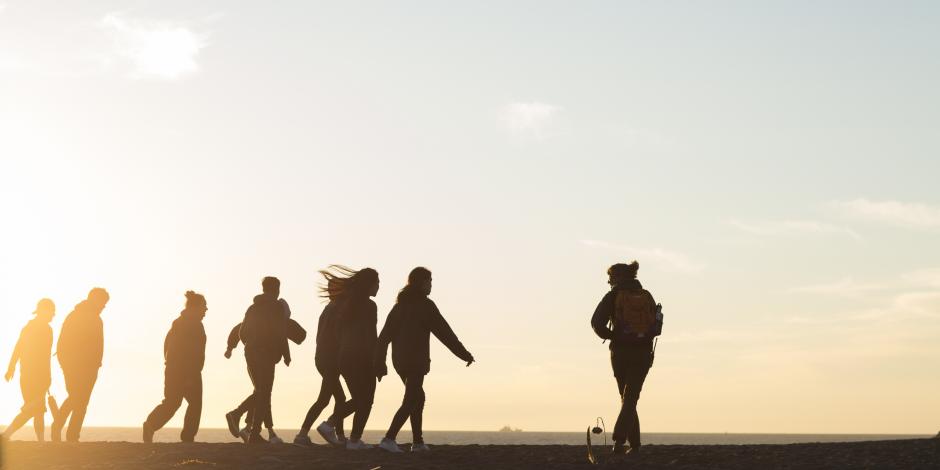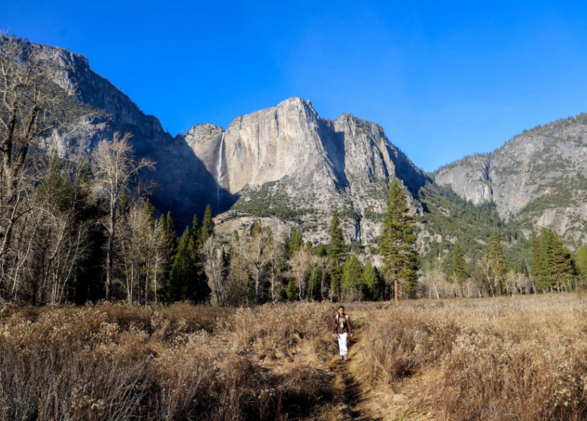Social Emotional Learning at NatureBridge

“IIt’s not easy being a kid.”
While that statement has always been true, children today face an entirely new set of challenges than every previous generation thanks in part to the ubiquity of screens, technology and social media. Anxiety and depression within teenage populations has been steadily increasing alongside social media use per day — a 2019 study revealed 16% of students in grades seven through 12 spend more than five hours on various social media platforms every day. Many children don’t feel they have adequate access to mental health resources at school, home or anywhere else.
All of these troubling trends help explain the rise of social emotional learning (SEL), a holistic educational framework that focuses on building mental, emotional and interpersonal skills that lead to positive outcomes for students and the community as a whole. It encourages schools, families, caregivers and peers to focus energy and effort on the core competencies of self-management, self-awareness, responsible decision-making, social skills and social awareness.
We spoke with National Director of Education Meg Jakubowski to learn more about NatureBridge’s unique role in furthering SEL around the country and the ways in which our educators put theory into practice.

Can you first talk about the work you’re doing as the National Director of Education at NatureBridge?
So, I have the honor and privilege of overseeing the education leadership team, helping to ensure the quality and consistency of our programming. A lot of that has meant taking information that had been housed in individual silos and bringing all of these positive educational elements together in a more cohesive and consistent fashion.
What does that consistency of programming mean for NatureBridge?
I think [the consistency] allows us to do things like the Bechtel project, which is what really forwarded our social emotional learning and made it more rigorous and intentional across campuses. It’s the single greatest thing I’ve ever been a part of. I came on for the last year and a half of the 3 year grant cycle; Kathleen O’Connor, former Director of Research and Evaluation, and Estrella Risinger, former National Education Manager, were the dynamic SEL duo for a number of years; they were crucial to this program’s success, our new theory of change and a lot more.
In 2017, the S.D. Bechtel, Jr. Foundation awarded NatureBridge a $3.5 million grant to develop children’s character through social emotional learning and then share the results and insights with the broader environmental education community. NatureBridge was one of only 13 organizations selected to take part in this fully funded 33-month program; Boys and Girls Clubs of America, YMCA of the USA and Outward Bound were among the other highly regarded youth development organizations to be chosen. Briefs that outline findings can be found here.
Tell us a little more about the Bechtel project.
The initial framing of the project was to have a field level-wide impact on character development. They took a handful of youth development organizations across America in an effort to scale up the skills of the adults operating in the field of environmental [education] because of how many students came into contact with these 13 organizations. It’s a huge number; almost 50% of all children K-12 in the U.S. will be touched by one of those 13 groups sometime in their student life. The potential impact is massive.
Can you talk about the importance of social emotional learning to the student experience in our programs?
Social emotional learning is the magic sauce of environmental education. WIthout it, you don’t have the type of programs that we have. You don’t have the educators’ connection with the students, you don’t have the students’ connection with each other, you don’t have the rapport building...it makes the magical things that much more impactful. If you don’t do the social emotional learning well, you won’t do the academically focused content well. That’s been known to folks at NatureBridge for a very long time, and I think the grant was a great opportunity to double-down on that knowledge, to highlight it, and to celebrate it.
What was NatureBridge’s organizational understanding of SEL prior to participating in this research?
It was this amorphous, inherent, well-known thing that didn’t have a lot of definition around it before Bechtel and before CASEL [Collaborative for Academic, Social, and Emotional Learning]...but so many of the SEL concepts — creating a positive learning environment, giving space for skills practice, displaying positive leadership and interaction with students, modeling perspective-taking and empathy — our educators were practicing them for decades.
I felt like it was the best professional development I ever had as a teacher...NatureBridge is not just for the kids. It’s professional development for educators when you get a great teacher; you learn a different way of teaching and a different way of being with kids. A lot of the stuff I’ve learned in Yosemite, I’ve brought back to the classroom.Mary Patterson, Teacher
How involved were educators in helping you understand SEL?
I think for this program we knew who the experts were and wanted to put them at the forefront of defining what social emotional learning is at NatureBridge. So, really early on, we engaged educators whom we had called “bright lights.” They were nominated by their peers and seen as leaders and mentors at their particular campuses, so we figured out how to bring in their voices and expertise to help us define what SEL should look like and where we can go with it.
Since NatureBridge was already utilizing SEL core concepts through our educators, what difference can the grant make in terms of future student success?
[Because of the grant research], students come away from our programs with named skills: perseverance, resilience, empathy, perspective-taking, appreciating diversity of thought — these are all things that were in the “magic sauce,” but that’s really what the grant allowed us to do: define it. Where we used to say “personal growth and interpersonal skills” in our theory of change, we’ve now added nuance. What are “interpersonal skills?” That’s cultural competency, conflict resolution, effective communication…articulating them makes it even more likely that these positive student outcomes will continue and hopefully expand.
With all you’ve learned from this 33-month research project, what changes do you see to NatureBridge’s programming going forward?
I think what we found is that we were doing a really great job already, and we can take one step further as far as our EI&D (Equity, Diversity and Inclusion) perspectives, our engagement with our staff and being more culturally relevant to our students out on programs. The grant gave us a chance to really ask, “Okay, what is NatureBridge really good at when it comes to SEL?” and then how do we articulate that and drive towards that?
You mentioned EI&D — what is the relationship between social emotional learning and equity?
As these conversations were evolving in the very beginning stages of the grant, the program officers and organizations realized EI&D was an integral part of social emotional work. Even though we understood this prior, we communicated clearly to the foundation that SEL and EI&D are inextricably linked. Understanding someone else’s point of view, being open to cultures and viewpoints outside your own — equity is deeply embedded in these ideas and practices, and it’s a cornerstone of our work. Now, we’re more aware of that and putting it into practice with more intention.
Some say that social emotional learning is just a buzzy phrase; any thoughts on that critique?
We’ve been doing it in some form for 50 years. Social emotional learning isn’t something you do to someone else; it’s an environment that you foster, it’s the way you speak to other people and it’s how you approach interpersonal situations. It’s not just “team building” anymore — it’s the next level in terms of education and equity and serving [students].

